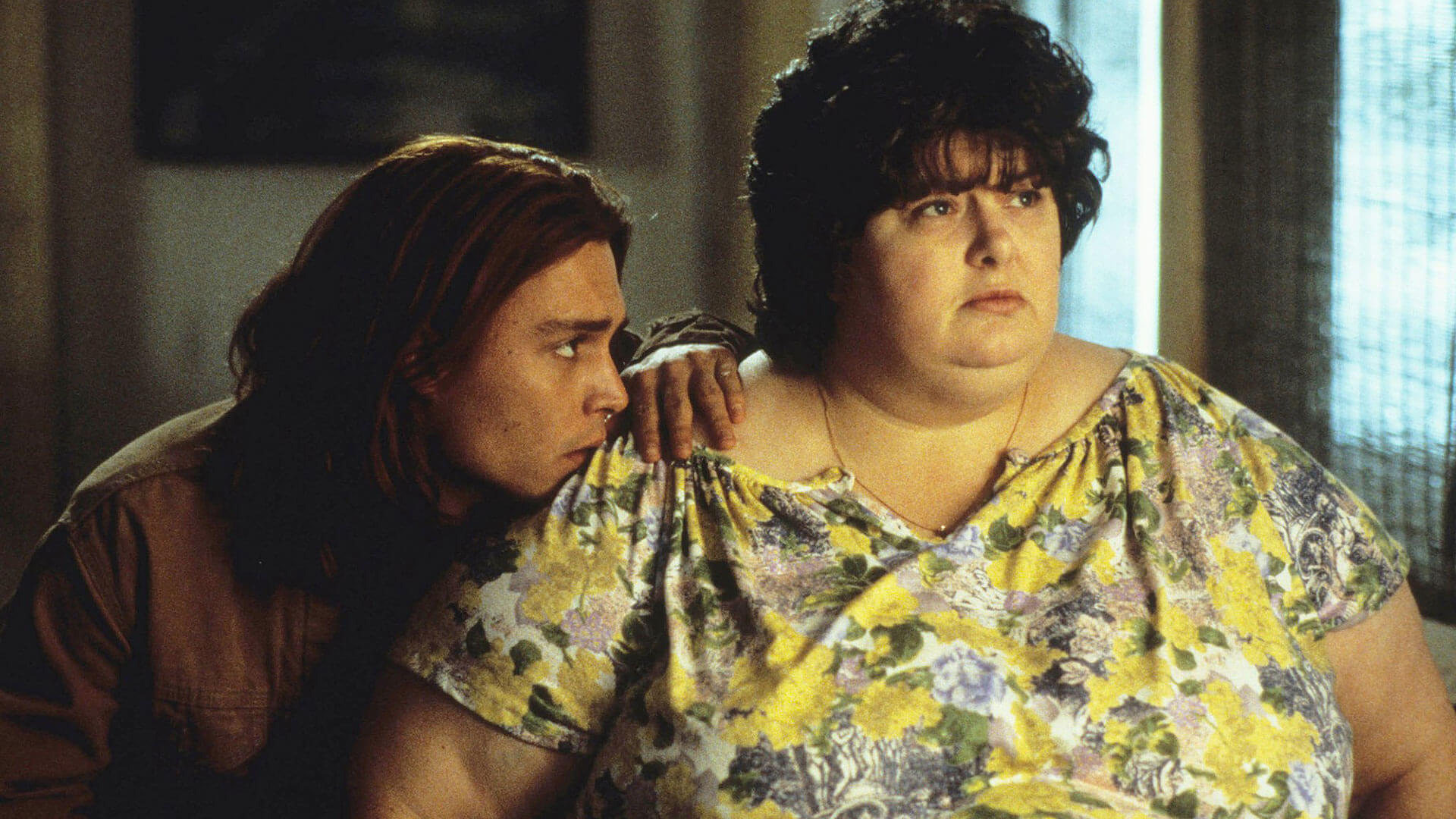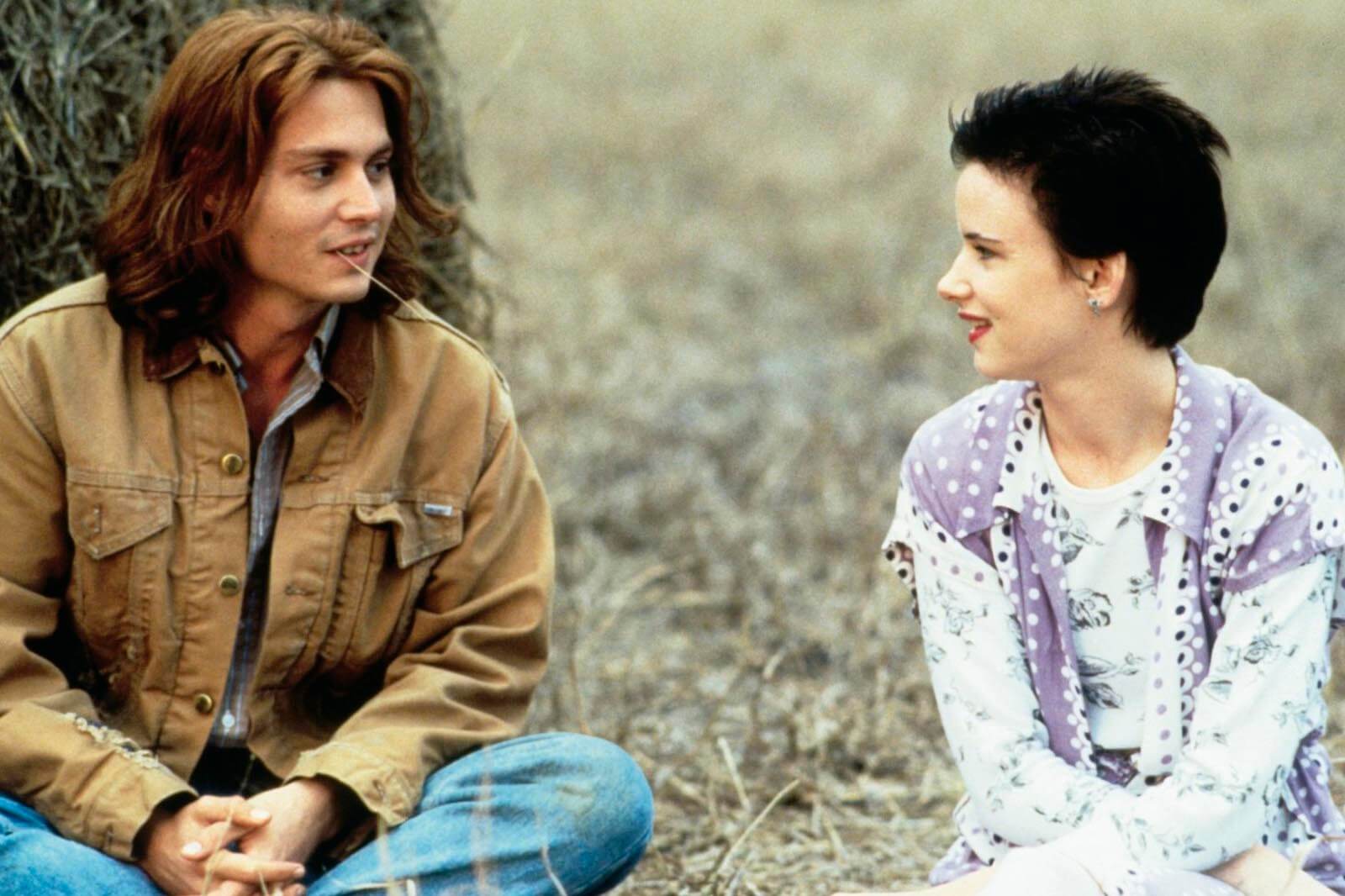What's Eating Gilbert Grape: The Burden of Dysfunctional Families


Written and verified by the psychologist Sharon Capeluto
What’s Eating Gilbert Grape? is a movie starring the amazing actors Johnny Depp and Leonardo DiCaprio. This production shows us the psychological and emotional consequences of being part of a dysfunctional family. Gilbert must go through deep internal struggles to live his own life.
Brief plot of the film
This is a film that was directed by Swedish Lasse Hallström in 1993. The story takes place in Endora, a small and boring town. In the words of Gilbert (Johnny Depp), living there is like “dancing without music”. The young man lives with his mother and siblings in a house that’s falling apart. In addition, he has a monotonous and unsatisfactory life, as he assumes the responsibility of emotionally and financially supporting his dysfunctional family.
Only 19 years old at the time of filming, Leonardo DiCaprio plays Arnie, a young man with cognitive disabilities. He is the brother of Gilbert, Amy, and Ellen, who detests him. Meanwhile, his mother, Bonnie, goes into a deep depression after the death of her husband – and the father of three of her four children – which leads her to suffer from morbid obesity.
In this painful and uncomfortable context, Gilbert Grape doesn’t even consider the possibility of leaving to live adventures far from his family. He feels trapped in his life as a caregiver and must deal with the demands of his job at a grocery store. However, everything changes when Becky, a beautiful young woman, and her grandmother are forced to stay in town for a few days because of a breakdown in their trailer.

What’s Eating Gilbert Grape? The aspects of a dysfunctional family
It’s essential to clarify that not all dysfunctional families look the same. In some, there are situations of violence, abuse, and the absence of empathy. In others, for example, there’s an evident lack of respect for one another’s limits, as well as an inadequate distribution of assigned roles. Whatever the case may be, in all dysfunctional families, living together becomes difficult and unhealthy.
“A dysfunctional family is one where family members are negatively affected emotionally, psychologically and spiritually“.
– June Hunt –
Below, we’ll discuss some of the aspects of the family in What’s Eating Gilbert Grape? They’re indicative of dysfunctional and problematic family dynamics.
Inefficient communication
There’s very little communication in the Grape family, which leads to conflict and loud arguments. This is one of the main characteristics of dysfunctional families. Therefore, although there’s love, words of affection don’t flow naturally. There are great difficulties in registering one’s emotions and, therefore, in communicating them.
Overprotection and dependence
Disability is very present in this story. Both Arnie’s maturational delay and the mother’s depression and obesity challenge the individuality of each of the characters. As Gilbert tells Becky when she asks him about his family:
“Attached is, I guess, not the right word. She’s pretty much wedged in.”
– Gilbert Grape –
Young Arnie is overprotected by Gilbert, which disrupts his growth and autonomy. Likewise, Bonnie’s obesity causes her to require assistance to meet any of her basic needs. The level of dependency becomes increasingly intense as her situation doesn’t improve.

Unhealed wounds
Although not many details are given about the father’s death, we can guess that this loss brought on a complicated grieving process. In fact, this is what leads the mother to eat disproportionately until she reaches a weight that considerably affects her quality of life. In this case, the unhealed wounds translate into a dysfunctional dynamic, as that which is “unresolved” seeks to express itself in some way.
Dissatisfaction with the distribution of roles
“Do I continue to fulfill the role of parent or do I focus on my own life?“ This is the question that plagues Gilbert, sometimes consciously and sometimes not so much. He clearly feels unhappiness and frustration with the life he has. However, a sense of guilt plays a key role in his internal struggle. In that way, such inner conflict affects his relationship with his family.
When love knocks on his door in an unexpected way, his need for liberation begins to grow. This is how he begins to make decisions that respond to his desires and needs. In this way, the family dynamic is completely transformed and, although pain is part of the process, the consequences are beneficial for everyone.
Read also: Different Types of Dysfunctional Families
Identify, question, and change
In the Grape family, dysfunctionality is mainly based on the lack of autonomy. For various reasons, members feel trapped in unsatisfying roles. But remember that there are many reasons why a family structure can be dysfunctional. In general, this is associated with faults or with excesses.
Faced with such a problem, the first thing to do is to recognize it. Once the unhealthy dynamic has been identified, a deep work of questioning can begin in order to think of a new possible scenario. In this regard, it’s very helpful to seek advice from family psychologists. Do as the Grape did and change things!
What’s Eating Gilbert Grape? is a movie starring the amazing actors Johnny Depp and Leonardo DiCaprio. This production shows us the psychological and emotional consequences of being part of a dysfunctional family. Gilbert must go through deep internal struggles to live his own life.
Brief plot of the film
This is a film that was directed by Swedish Lasse Hallström in 1993. The story takes place in Endora, a small and boring town. In the words of Gilbert (Johnny Depp), living there is like “dancing without music”. The young man lives with his mother and siblings in a house that’s falling apart. In addition, he has a monotonous and unsatisfactory life, as he assumes the responsibility of emotionally and financially supporting his dysfunctional family.
Only 19 years old at the time of filming, Leonardo DiCaprio plays Arnie, a young man with cognitive disabilities. He is the brother of Gilbert, Amy, and Ellen, who detests him. Meanwhile, his mother, Bonnie, goes into a deep depression after the death of her husband – and the father of three of her four children – which leads her to suffer from morbid obesity.
In this painful and uncomfortable context, Gilbert Grape doesn’t even consider the possibility of leaving to live adventures far from his family. He feels trapped in his life as a caregiver and must deal with the demands of his job at a grocery store. However, everything changes when Becky, a beautiful young woman, and her grandmother are forced to stay in town for a few days because of a breakdown in their trailer.

What’s Eating Gilbert Grape? The aspects of a dysfunctional family
It’s essential to clarify that not all dysfunctional families look the same. In some, there are situations of violence, abuse, and the absence of empathy. In others, for example, there’s an evident lack of respect for one another’s limits, as well as an inadequate distribution of assigned roles. Whatever the case may be, in all dysfunctional families, living together becomes difficult and unhealthy.
“A dysfunctional family is one where family members are negatively affected emotionally, psychologically and spiritually“.
– June Hunt –
Below, we’ll discuss some of the aspects of the family in What’s Eating Gilbert Grape? They’re indicative of dysfunctional and problematic family dynamics.
Inefficient communication
There’s very little communication in the Grape family, which leads to conflict and loud arguments. This is one of the main characteristics of dysfunctional families. Therefore, although there’s love, words of affection don’t flow naturally. There are great difficulties in registering one’s emotions and, therefore, in communicating them.
Overprotection and dependence
Disability is very present in this story. Both Arnie’s maturational delay and the mother’s depression and obesity challenge the individuality of each of the characters. As Gilbert tells Becky when she asks him about his family:
“Attached is, I guess, not the right word. She’s pretty much wedged in.”
– Gilbert Grape –
Young Arnie is overprotected by Gilbert, which disrupts his growth and autonomy. Likewise, Bonnie’s obesity causes her to require assistance to meet any of her basic needs. The level of dependency becomes increasingly intense as her situation doesn’t improve.

Unhealed wounds
Although not many details are given about the father’s death, we can guess that this loss brought on a complicated grieving process. In fact, this is what leads the mother to eat disproportionately until she reaches a weight that considerably affects her quality of life. In this case, the unhealed wounds translate into a dysfunctional dynamic, as that which is “unresolved” seeks to express itself in some way.
Dissatisfaction with the distribution of roles
“Do I continue to fulfill the role of parent or do I focus on my own life?“ This is the question that plagues Gilbert, sometimes consciously and sometimes not so much. He clearly feels unhappiness and frustration with the life he has. However, a sense of guilt plays a key role in his internal struggle. In that way, such inner conflict affects his relationship with his family.
When love knocks on his door in an unexpected way, his need for liberation begins to grow. This is how he begins to make decisions that respond to his desires and needs. In this way, the family dynamic is completely transformed and, although pain is part of the process, the consequences are beneficial for everyone.
Read also: Different Types of Dysfunctional Families
Identify, question, and change
In the Grape family, dysfunctionality is mainly based on the lack of autonomy. For various reasons, members feel trapped in unsatisfying roles. But remember that there are many reasons why a family structure can be dysfunctional. In general, this is associated with faults or with excesses.
Faced with such a problem, the first thing to do is to recognize it. Once the unhealthy dynamic has been identified, a deep work of questioning can begin in order to think of a new possible scenario. In this regard, it’s very helpful to seek advice from family psychologists. Do as the Grape did and change things!
All cited sources were thoroughly reviewed by our team to ensure their quality, reliability, currency, and validity. The bibliography of this article was considered reliable and of academic or scientific accuracy.
- Canales, F. (1995). ¿A quién ama Gilbert Grape?: El gran salto. Mensaje N. 442. https://repositorio.uahurtado.cl/static/pages/docs/1995/n442_36.pdf
- Barreto, P., de la Torre, O., & Pérez-Marín, M. (2012). Detección de duelo complicado. Psicooncología, 9(2/3), 355.
- Hallström, L. (1993). What’s Eating Gilbert Grape? Paramount Pictures.
- Ruiz, S. J., Peña-Bonilla, E. I., Gantiva-Rueda, N. C., Rodríguez, R. R., & Galvis, L. R. (2015). Familias Disfuncionales. Universidad Nacional Abierta y a Distancia “Unad”. Bogotá, D.C. https://repository.unad.edu.co/handle/10596/27019
- Ruiz, K. D., & Briones, M. F. B. (2020). Familias disfuncionales y su impacto en el comportamiento de los estudiantes. Polo del Conocimiento: Revista científico-profesional, 5(12), 419-433. https://dialnet.unirioja.es/servlet/articulo?codigo=8042551
This text is provided for informational purposes only and does not replace consultation with a professional. If in doubt, consult your specialist.








